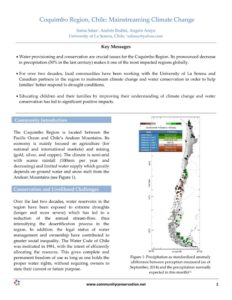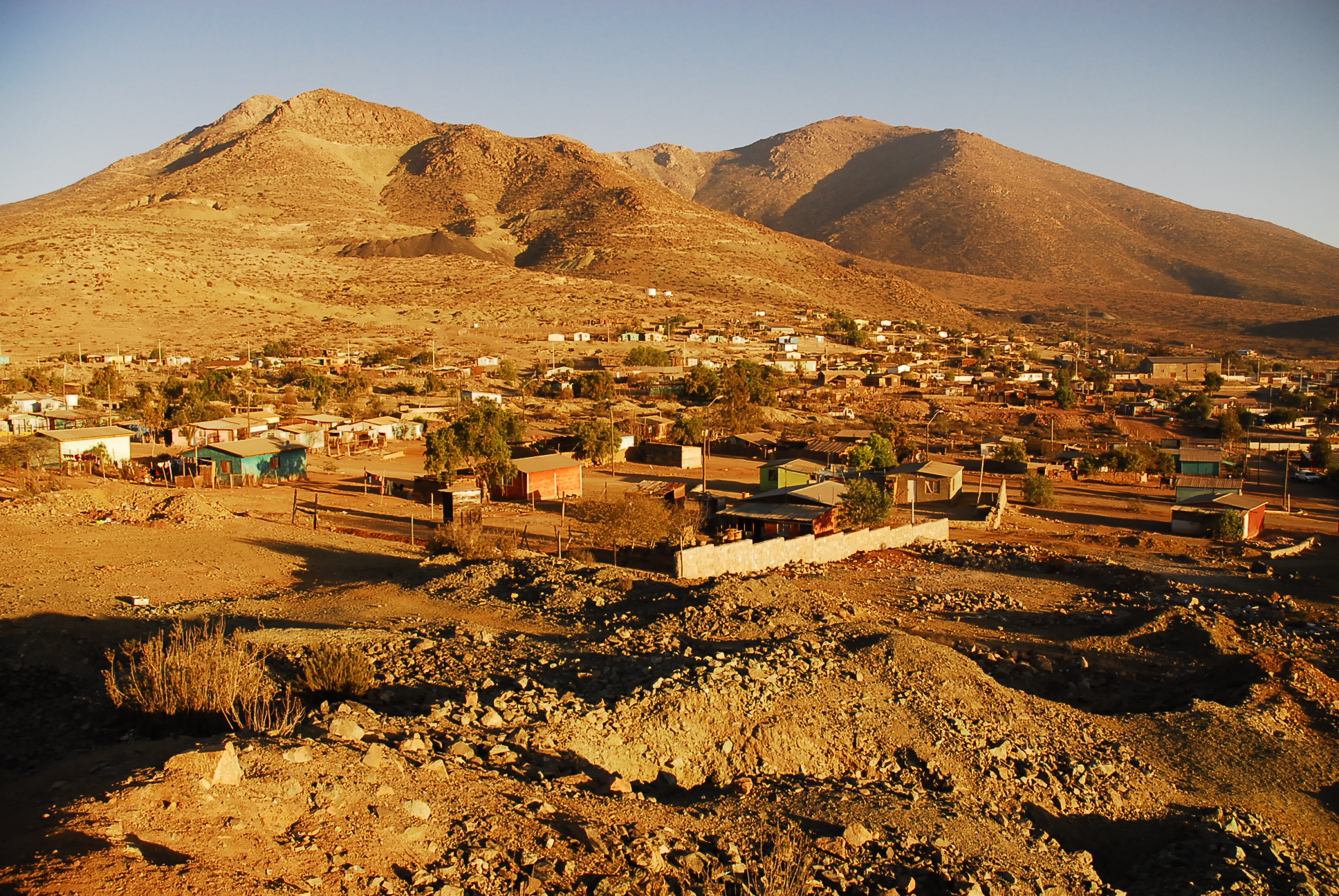
19 Jan Coquimbo Region, Chile
Sonia Salas1, Andrés Bodini, Angelo Araya, University of La Serena, Chile; 1salassc@yahoo.com
Key Messages
- Water provisioning and conservation are crucial issues for the Coquimbo Region. Its pronounced decrease in precipitation (50% in the last century) makes it one of the most impacted regions globally.
- For over two decades, local communities have been working with the University of La Serena and Canadian partners in the region to mainstream climate change and water conservation in order to help families’ better respond to drought conditions.
- Educating children and their families by improving their understanding of climate change and water conservation has led to significant positive impacts.
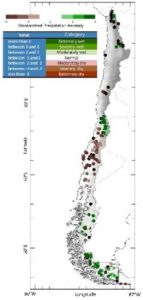
Figure 1: Precipitation as standardized anomaly (difference between perception measured (as of September, 2014) and the precipitation normally expected in this month)(1).
Community Introduction
The Coquimbo Region is located between the Pacific Ocean and Chile’s Andean Mountains. Its economy is mainly focused on agriculture (for national and international markets) and mining (gold, silver, and copper). The climate is semi-arid with scarce rainfall (100mm per year and decreasing) and limited water supply which greatly depends on ground water and snow melt from the Andean Mountains (see Figure 1).
Conservation and Livelihood Challenges
Over the last two decades, water reservoirs in the region have been exposed to extreme droughts (longer and more severe) which has led to a reduction of the annual stream-flow, thus intensifying the desertification process in the region. In addition, the legal status of water management and ownership have contributed to greater social inequality. The Water Code of Chile was instituted in 1981, with the intent of efficiently allocating the resource. This gives complete and permanent freedom of use as long as one holds the proper water rights, without requiring owners to state their current or future purpose. This has led to a very competitive water market where large enterprises have bought most of the rights, thus decreasing the amount of water available for farmers. The increasing water scarcity is particularly challenging for the Coquimbo Region’s communities as many make their livelihoods from agriculture and goat farming.
Rural Potable Water Committees (RPWC) have formed in response to this reality. These are self-sustaining, communitarian institutions in charge of obtaining, processing, distributing and managing potable water. Although the RPWC are very important stakeholders in the rural areas, the RPWC lacks networking and coordination capacities.
Community Initiative
Since 2004, Coquimbo Region Comunas (communities) have been working in collaboration with the University of La Serena and Canadian partners on three international projects/programs in the region. These programs – Institutional Adaptation to Climate Change (2004-2009), Water Conservation in Rural Areas (WCRA, 2004-2009), and Comparative Vulnerability Study between two basins: the Mendoza River Basin in Argentina and the Elqui River Basin in Chile (2009-2012) – delivered a series of activities in local Comunas.
Given the experiences that communities have had with government and large enterprises, building trust between communities and the university was an essential first step in developing a more informed community engagement. Once the trust was established, a baseline assessment on water use and management at the local and municipal level was developed for selected Comunas. The baseline reports collected information on educational, training and planning aspects of water conservation from the 2002 Census, Communal Development Plan, Regional Development Plan, newspapers, and informal face to face interviews.
Leadership Promotion and Knowledge-Sharing for Women and Men
Comunas members and leaders expressed strong interest in improving their understanding of water conservation and climate change impacts. These community members attended a variety of workshops, seminars (Figure 2) and meetings about vulnerability, climate change and legal issues.
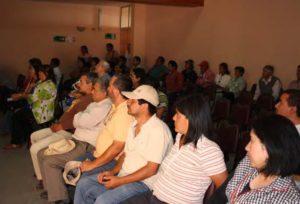
Figure 2: seminar session.
Nearly 200 participants (60% men, 40% women) discussed the socio-economic effects of drought on the region and 60 key stakeholders (70% women) from nearby Comunas attended meetings which promoted knowledge-sharing on different technological innovations and production alternatives linked to the efficient use of natural resources. For example, in Punitaqui, dew was accumulated on rooftops during the night in order to irrigate exotic fruits such as copao, goldenberry and chayote. Community members shared their expertise and experiences with people nation-wide and internationally, which led to an interchange of strategies. Goat herders and institutional officers also shared their ecological knowledge of past, present and future climate vulnerabilities.
The Rural Potable Water Committees attended seminars and workshops to discuss issues related to water legislation (Water Code), communitarian water management and climate change effects. These seminars and workshops provided the RPWC’s with a greater understanding of practical legal water issues, as well as best strategies for future climate scenarios. Information was disseminated through digital copies of the legal water code and through a booklet naming the different organizations related to water governance describing their functions.
Practical Outcomes
Educational Material and Tools
Materials related to water conservation and management were developed and disseminated to children, including:
• an educational manual to promote sustainable development, in elementary school (40 copies);
• a preschool storybook (Figure 3) depicting animals dealing with contamination in the northern valley (200 copies);
• a five chapter video; and
• a teacher’s activity guide.
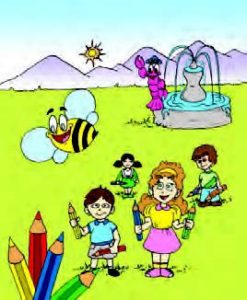
Figure 3: children’s’ Storybook.
The teacher’s activity guide was approved by Chile’s Ministry of Education which is currently programming a large-scale regional distribution of this educational tool. Additionally, ten workshops were held for rural school teachers and community leaders in order to prepare a curriculum related to environmental sustainability and certification for new schools – the Environmental Certification Program. This program was developed by the Environmental Ministry, which emphasized its importance during a visit to four certified schools in the study area, to help children learn the value of conservation at an early age.
Women and Decision-Making
Women primarily administer household water. The book Viviendo en Tierras Secas (“Living in Drylands”) by Salas, Jiménez & Bugueño (2011) describes the experiences of rural women dealing
with adverse climatic, economic and social conditions and their inclusion in decision-making processes(2) (Figure 4). Examples from this book appeared in a national women’s TV production (TVN: Chile’s public TV channel).
Water Week Celebration
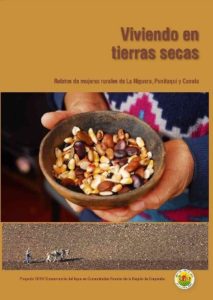
Figure 4: book: Viviendo en Tierras Secas (“Living in Drylands”).
Community members shared their existing creative local practices with over 100 stakeholders from the community, university and public agencies (70% women, 30% men) over the period 2006-2010. The Water Week Celebration is dedicated to festivities, contests, and public debates around water. During this celebration, 3 annual awards (over 3 years) were provided, thus increasing the visibility of good water and environmental practices.
360º Dissemination and Empowerment through Communication
The “Gazeta del Agua” (“The Water Gazette”) is a key example of legitimate stakeholder participation, since local partners produced many of their own articles. Women were especially empowered by these articles and the opportunity to express their thoughts about social water management. This communication program is shared through a website, videos, newsletters, flyers, exhibitions and published books (available at Google Books). Six issues were published and 200 copies per issue were distributed in the Comunas and regional public institutions.
A Cohesive Group of Strong Local Social Institutions
Las Comunas, in cooperation with CCRN partners in Chile, are spearheading a follow-up process and extensive review of activities in the region (Figure 5). Partial outcomes indicate that current precipitation deficits and water reservoir levels have continued to decrease, aggravating the critical drought condition in the Coquimbo region. The seven communities which collaborated during former projects have maintained close relationships with the university and are increasingly contributing to the most important coping mechanism: a cohesive group of strong local social institutions adapting to socio-economic challenges and climatic vulnerability.
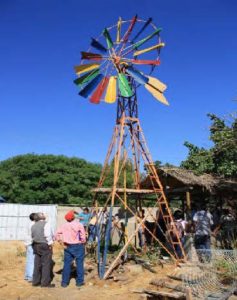
Figure 5: project collaboration from las Comunas: exploring precipitation.
Examples of ‘Best Practices’
TiNi (Tierra y Valle de los Niños / Land and Valley of the Children) is an organization which promotes values and practices of social-environmental responsibility in young children and teenagers (Figure 6). These children are provided a piece of land (1m2) and implement the entire agricultural process, including crop selection, land preparation, irrigation, care and harvest, with the support of the Ministry of the Environment and Global TiNi networks. TiNi has received 4 important awards (e.g., UNESCO) in recent years, and receives permanent financial support from the local Rural Potable Water Committee.
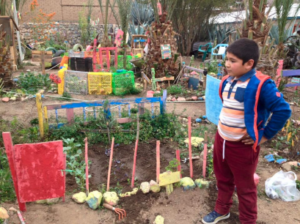
Figure 6: TiNi children learning the agricultural process.
The Rural Potable Water Committee of Diaguitas is responsible for foreseeing dryland weather trends. As such, it has chosen to buy a strategically located piece of land (over an underground water reservoir) in order to protect it and ensure sufficient water extraction for the future. The RPWC are currently participating in debates on water preservation strategies in response to land ownership trends such as citizens from the nearby city building swimming pools that are using the Committee’s water.
In 2010, the inhabitants of the town of Punta de Choros (located in La Higuera) organized themselves to prevent the construction of a thermoelectric power plant, which would have put the country’s first marine reserve at risk. The union of different social actors were so passionate over protecting the marine reserve that the country’s president himself issued an order to suspend the initiative and preserve marine resources, flora and fauna(3). Today, the community continues the fight to prevent the installation of iron mines in the area “Dominga”(4).
The Estero Derecho Irrigations Association is currently promoting and making the necessary legal arrangements to declare its agricultural community as a Natural Sanctuary, pending presidential and cabinet approval, as well as a RAMSAR site. This action is intended to preserve and prevent mining activity in a very important water provision area(5). Comunas, with CCRN researchers, are monitoring these developments.
Next Steps
Currently, local partners, together with CCRN partners, are searching for strategies of environmental conservation and adaptation, given the permanent desertification process, in the hopes to better understand the question “What does the conservation of water mean to communities and what motivates its stewardship?” This will help to promote conservation strategies and environmental stewardship, particularly focusing on children and their families. Outcomes have shown the positive and significant impacts of working with children on these concepts at early developmental stages, as well as the importance of interaction and commitment of families and teachers.
Although government tries to help communities in the region with subsidies and other policies, the people understand that they live in a permanent desertification process. They consider the only way to make conservation in their area successful is to organize themselves, since help from formal institutions arrives late whenever an event occurs, (earthquake, mudslides, etc.).
The knowledge gained from a comparative study on vulnerability and climate change in Mexico will hopefully provide insights on adaptive procedures/strategies linked to ecosystems on common issues that could come up and help conservation efforts. Through the analysis of previous interviews, focus groups and secondary information (over the last ten years), the research team is applying the “Adaptive Capacity Wheel” method (6). The method will be able to describe and compare the past and present adaptive capacity and will define if those capacities are sustainable over time. The analysis is considered of importance to support public policies taking into account the context of climate change and permanent drought that the region is facing today and in the near future.
References
1. Dirección General de Aguas de Chile. (2014). Accessed September 2014 from: http://www.climatedatalibrary.cl.
2. Salas, S., Jiménez, E. & Bugueño, L. (2011). Viviendo en tierras secas. Editorial del Norte: La Serena, Chile.
3. La Nación (2010). Accessed August 2010 from: http://www.lanacion.cl/central-termoelectrica-barrancones-no-se-construira-en-punta-de-choros/noticias/2010-08-26/113013.html.
4. 24Horas.cl. (2015). Accessed July 2015 from: http://www.24horas.cl/programas/informeespecial/informe-especial-presento-la-pelea-de-los-choros-1739878.
5. Ministerio del Medio Ambiente. (2015). Accessed January 2015 from: http://portal.mma.gob.cl/estero-derecho-es-declarado-santuario-de-la-naturaleza/.
6. Gupta, J., Termeer, C., Klostermann, J., Meijerink, S., van den Brink, M., Jong, P., Nooteboom, S. & Bergsma, E. (2010). The adaptive capacity wheel: a method to assess the inherent characteristics of institutions to enable the adaptive capacity of society. Environmental Science & Policy, 13(6), 459-471.



